Social justice and sustainability by leveraging data science and AI: Interview with Dr. Mahendra Samarawickrama

Hyperight interviews Dr. Mahendra Samarawickrama, Senior Manager, Data Science and Analytics at Australian Red Cross, discusses how data science and AI can be leveraged to improve social justice and sustainability.
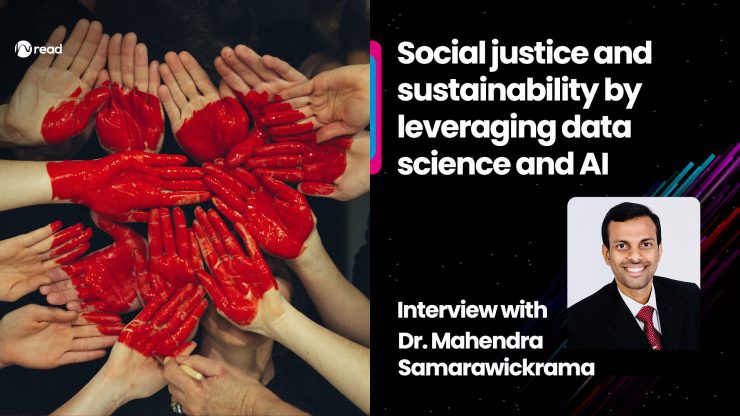
AI can be used for either good or bad, it is us humans who set the course. We’ve seen how due to its dual nature, AI has a huge potential to help us improve our environments and lives, as well as contribute to sustainability, but at the same time it can pose a great risk for humanity in terms of autonomous weapons, bias, privacy violation and social-economic inequality. At the Data Innovation Summit 2021, we’ll hear a case study about how, if governed properly and put to the right use, AI and data science can help enhance social justice, diversity, equity, inclusion and sustainability by mobilising the power of humanity.
Learn more about the Data Innovation Summit
Dr. Mahendra Samarawickrama, Senior Manager – Data Science and Analytics at Australian Red Cross, will introduce the topic of Unified AI-Ethics Collaboration Framework for Corporate Social Responsibility (CSR), which enables adopting AI ethics as an important state in an organization’s AI roadmap which drives AI for serving humanity and future sustainability.
Hyperight: Hello Dr. Mahendra Samarawickrama, we are so excited to welcome you to the International Data Innovation Summit. As a start, please tell us a bit more about yourself, your background and your role at the Australian Red Cross.

Mahendra Samarawickrama: First of all, in the spirit of reconciliation, The Australian Red Cross acknowledges the traditional custodians of the country throughout Australia and their connections to land, sea and community. We pay our respect to their elders past and present and extend that respect to all Aboriginal and Torres Strait Islander peoples today.
Thank you for inviting me to the Data Innovation Summit. I’m the manager of the AI, data science and analytics team of the Australian Red Cross. I hold a PhD in computer science with double masters in business administration (MBA) and project management (MPM). I am a senior member of IEEE (SMIEEE), an honorary visiting scholar at the University of Technology Sydney (UTS), an industry mentor in the UNSW business school and a Graduate of the Australian Institute of Company Directors (GAICD).
In the Australian Red Cross, I lead the AI and data-science strategy for social justice and sustainability by mobilising the power of humanity. I am working closely with IFRC (International Federation of Red Cross), partners, academics, researchers, volunteers and community (e.g., citizen scientists) in our data science initiatives for humanity. My team is working towards achieving the Red Cross strategy 2030 humanitarian goals by leveraging the data science and AI capabilities. These include enhancing charity business for financing humanitarian operations, realising sustainable humanitarian goals and enabling social justice by bringing social diversity, equity and inclusion to our mission of innovations and transformations in data science and AI for sustainability.
Hyperight: Apart from all other AI applications for advancing our lives and businesses, AI for good is emerging as a movement that empowers organisations working to solve global challenges to the environment, humanitarian issues, accessibility, health, and cultural heritage. At the Data Innovation Summit, you are going to present on Unified AI-Ethics Collaboration Framework for Corporate Social Responsibility (CSR). Could you reveal to us why AI ethics are important, what the framework entails and how it helps organisations to work collaboratively with the Red Cross aligning with their corporate social responsibilities?
Mahendra Samarawickrama: The Red Cross mission is to prevent or reduce human suffering, wherever it is found. We are part of the world’s largest humanitarian movement, operating in over 190 countries. We have over 17 million volunteers worldwide. We play an auxiliary role to the government – recognised as a reliable partner for mobilising the power of humanity.
The Australian Red Cross is working on AI governance for sustainability because AI has a huge potential for humanity and significant risk if not properly governed. It is predicted that AI can contribute as much as 15.7 trillion to the world economy by 2030. At the same time, AI creates great risks for humanity such as autonomous weapons, automation-spurred job loss, socio-economic inequality, privacy violations, Deepfakes, and bias caused by data and algorithms. Further, it has been predicted that by 2022, 85% of AI projects will fail due to bias in data, algorithms, or the teams responsible for managing them.
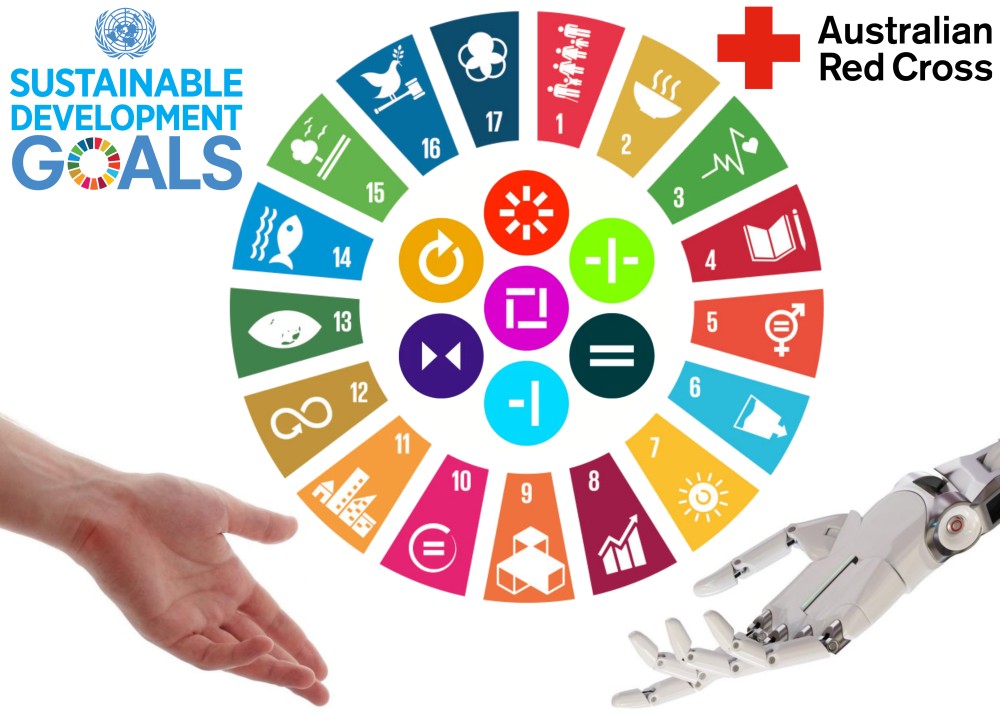
One way of addressing issues in AI governance is to enhance AI ethics by ensuring diversity, equity, inclusion and social justice. “Neither a person nor an apple can be diverse. Diversity is the property of a collection of people like a basket with many kinds of fruit”. We unified our 7 fundamental principles together with the United Nations’ Sustainable Development Goals (SDGs) to drive sustainable AI for sustainability. This drive is further strengthened by our co-competencies in humanitarian initiatives, volunteering, partnership and community engagement. Together it enhances social diversity, equity and inclusion while creating an environment to cooperate for engaging in social responsibilities with the Red Cross.
Our initiatives for driving sustainable AI for sustainability can be summarised by the following whiteboard animation:
Hyperight: Can you briefly explain the role of the Red Cross and the stakeholders in the proposed AI-ethics framework?
Mahendra Samarawickrama: To easily illustrate the roles of different stakeholders in the AI-ethics framework we introduced the wind-turbine conceptualised model. A conceptualised model is something like an hourglass model or iceberg model where we map the context into a simple object or system for easy understanding. In our case, we mapped our solution into a wind turbine system.
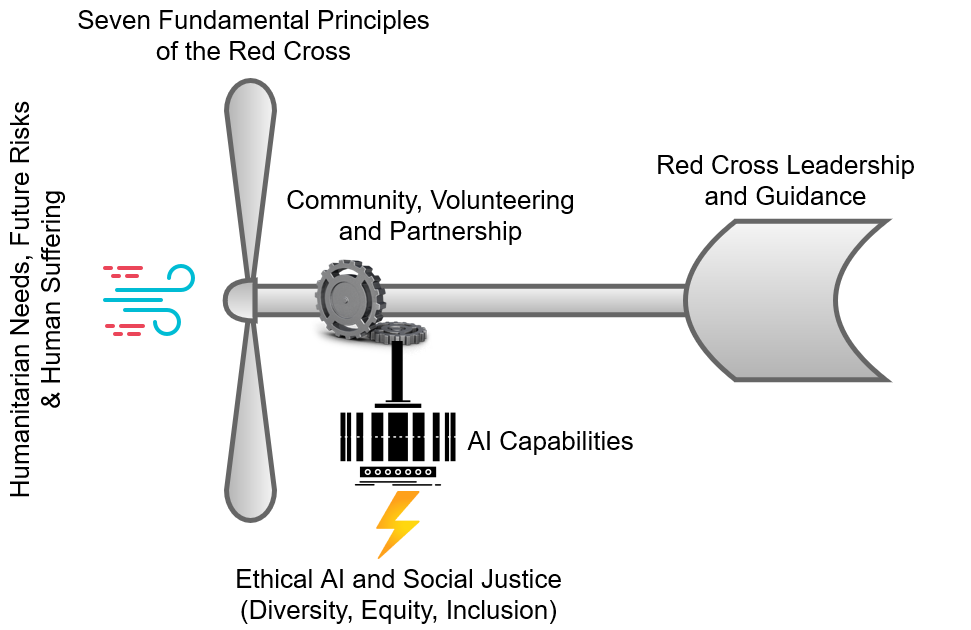
In this perspective, this model always directs us to humanitarian needs, risks and suffering for working on humanity and sustainable development goals (SDGs). This process is guided by the Red Cross leadership and guidelines as the tail directs the wind turbine to the direction of the wind which it is sensitive to.
The front-faced multi-blade rotor represents the 7 fundamental principles of the Red Cross which ethically and efficiently address humanitarian needs, risks and suffering. The wheels in the gearbox represent our community, partners and volunteers who are continually helping with this great course by mobilising the power of humanity. Finally, the generator represents our Data and AI capabilities which drive the AI innovation and transformation for sustainability. Through this process, we can ensure social diversity, equity, inclusion and justice.
More information about this concept can be referred from:
AI-Ethics Framework for Humanity and Sustainability: AI for Good perspective
Hyperight: From the organization perspective, how does this framework help organisations adopt AI ethics as part of their AI strategy for sustainability?
Mahendra Samarawickrama: AI ethics is a complex process as by means AI has the autonomous decision-making capability. Hence, AI ethics must be realized from the very beginning where artificial intelligence is initiated by humans. Therefore AI ethics should be underpinned by human ethics.
Our 7 fundamental principles which are Humanity, Impartiality, Neutrality, Independence, Unity, Universality, and Voluntary Service create an effective ethical framework for serving humanity and sustainability for more than 150 years. At the same time, these principles guide humans to make decisions for humanity and sustainability. Therefore, through this framework organizations can adapt our 7 fundamental principles for good AI governance while working with the Red Cross. In brief, Humanity can drive AI as a good course for achieving social justice. Impartiality can make AI processes unbiased. Neutrality enables us to drive AI initiatives with diversity. Independence enables the inclusion of social diversity. Unity enables us to address social equity. Universality enables us to work internationally in a global context. Volunteering enables us to enhance our capacity and resources in AI transformation. All together these 7 fundamental principles enable AI ethics for sustainability.
The Australian Red Cross enables and promotes collaboration in AI for humanity and sustainability. We have well-developed volunteer, partnership and community engagement programs to drive AI for social justice. The stakeholders get opportunities to work on serving humanity and social justice by leveraging AI for good aligning with corporate social responsibility (CSR). Following is an example of how the students of the University of New South Wales (UNSW) reflect their thoughts and feelings related to our AI for Good partnership program.
Hyperight: How can organisations make sure to put AI to good use to serve humanity and sustainability, and not make the same mistakes as with other resources that have caused global damages, e.g. oil, electricity, etc.?
Mahendra Samarawickrama: To make sure AI for good programs serve the purpose of serving humanity and sustainability, it is important to mitigate the biases in decision making in leadership, management and governance while managing the projects that enhance social justice. These make sure we can realise AI ethics and sustainable development goals.
However, to minimise biases and enhance social justice, it is required to bring social diversity, equity and inclusion to the leadership, management and governance. Only then can we achieve utilitarianism and consequentialism perspectives of human ethics which can underpin the AI ethics for serving humanity and sustainability. Our framework helps all stakeholders including communities, volunteers and partners to collaborate on sustainable development goals and social justice.
From a corporate governance and management perspective, this framework helps the corporate board, human resource (HR) and management to orchestrate culture, people and mission towards humanity and sustainability. We can present an illustrative diagram of how the synergy between corporate culture, people and mission can drive AI ethics toward sustainable AI and goals.
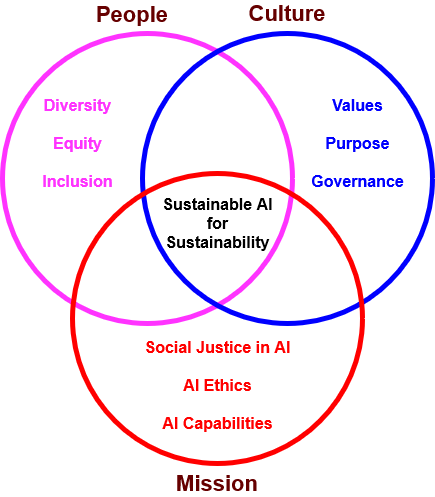
Hyperight: How does this AI-ethics framework help in your long-term goals and business objectives at the Australian Red Cross?
Mahendra Samarawickrama: Our purpose is to prevent and alleviate human suffering wherever it may be found by mobilizing the power of humanity. We believe our AI-ethics framework will help to achieve our purpose by enhancing social justice by mitigating AI risks and driving AI benefits for humanity and sustainability.
Further, it promotes collaboration and friendship between community, volunteers and partners for driving AI which are key success factors of our AI for Good program. We believe with broad social diversity, equity and inclusion in AI, we can ensure social justice in AI.
Following are some of the success stories we engage with the community, volunteers and partners:
- Mitigating the risk of climate change to first nations peoples. The project outcomes can facilitate and mobilize the first nations peoples as citizen scientists for mitigating their risks related to climate change
- Facilitating community, volunteers and partners to collaborate with the Australian Red Cross to drive AI-for-good with social diversity, equity and inclusion.
- Adopting modern science and technologies (e.g., AI and AR) to enhance international humanitarian law (IHL) implementation to save lives in conflicts. The possibilities are being explored to adopt AR and AI technologies for enhancing the situational awareness around the Red Cross emblem to save lives in conflicts.
In retrospect, our AI ethics and governance framework immensely helped to promote diversity, equity and inclusion in our AI-for-good programs and succeed in the social justice and humanitarian objectives.
Hyperight: And lastly, if we were to look in the near future, what can we expect from AI Ethics?
Mahendra Samarawickrama: The industry has identified the importance of synergy between the development of AI and mobilizing the organizational culture for realising social justice in AI. A greater social diversity, equity and inclusion can be expected in AI projects which enable ethical inclusion, processes and outcomes in AI. The sustainable AI and sustainable development goals will be a primary focus in AI developments that drive business objectives and corporate social responsibilities. Overall, this can be illustrated by the following figure.
READ MORE:
- The metaverse: Why it matters for business
- Microsoft announces price increase for Office 365 and Microsoft 365
- Ray-Ban Stories: Are Facebook and Ray-Ban’s smart glasses a privacy nightmare?
- How to defend against Active Directory attacks that leave no trace
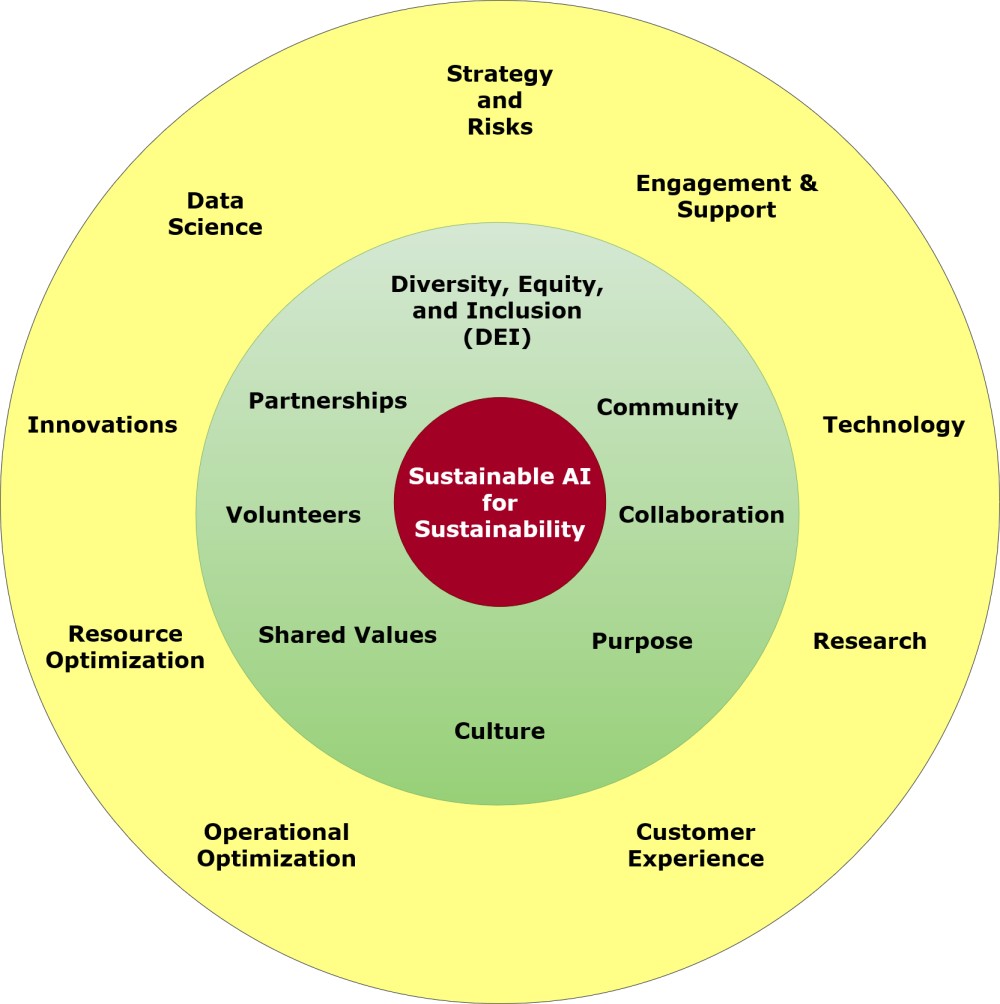
For more news from Top Business Tech, don’t forget to subscribe to our daily bulletin!
